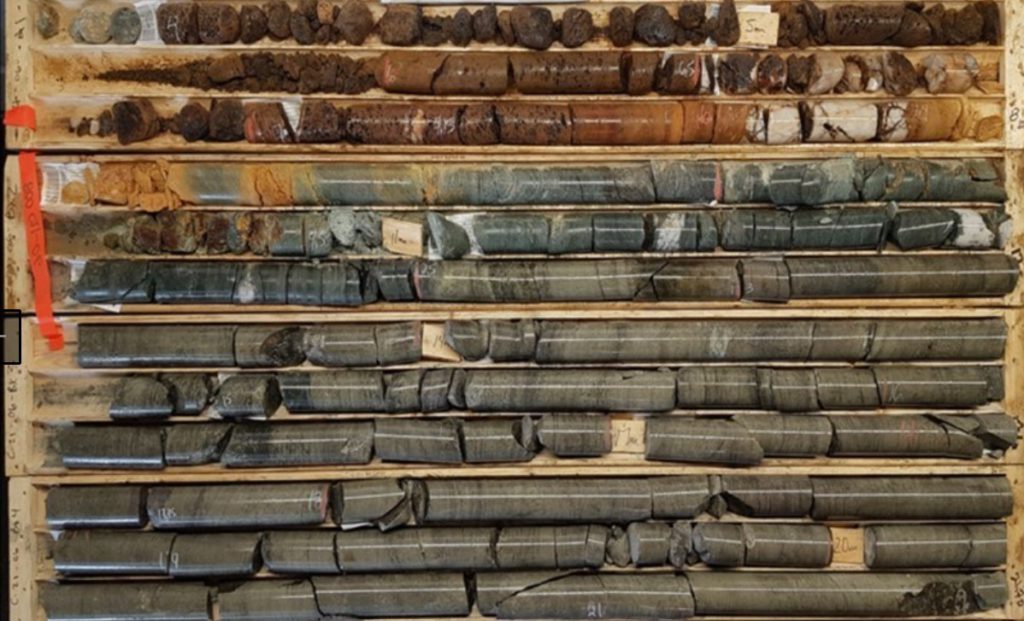Canadian Copper drills 3.55% Cu over 0.75 metre at Chester project in Bathurst camp


Canadian Copper (CSE: CCI) has released assay results from the first seven drill holes completed at its Chester copper project located in the Bathurst mining camp of New Brunswick. Chester is a volcanogenic massive sulphide resource containing three zones; the Central zone (massive sulphide), the East zone (massive sulphide), and the West zone (copper stringer), which are all located near surface.
The Phase 1 drilling was designed to test the mineralized extensions of the West zone, to test four regional anomalies outside of the known deposit, and to confirm the near-surface massive sulphide gossanous Central and East zone continuity. Each of these objectives were met by these seven drill holes in the end.
Hole C21-07 returned 0.75 metre of 3.55% copper, 0.95 metre of 1.4% copper, 0.65 metre of 1.05% copper, 1.00 metre of 0.87% copper and 1.00 metre of 0.72% copper from 386 metres, confirming several copper vein systems extensions to the West zone at depth and the deepest known mineralization at the project to date.
Holes C21-05 and C21-06 also confirmed near-surface massive sulphides, intersecting 10 metres of 1.4% copper and 1.8% zinc from 12.5 metres, and 23.5 metres of 0.79% copper and 0.9% zinc from 5.5 metres, respectively.
The West zone represents a wide mineralized copper system and extends laterally, at depth, and warrants additional exploration, Benz believes. Two of four regional drilling targets returned anomalous values for copper, silver and zinc. The massive sulphide target area supported grade and zone continuity and confirmed the presence of other metals, primarily gold and silver in the near-surface gossan zone.
"We are pleased with the results of this initial phase of drilling at Chester. Every drill hole encountered sulphide mineralization and five holes out of seven intersected the polymetallic mineralization. Canadian Copper continues to expand the historical resource, and the high-grade copper zone at depth warrants additional exploration," said Simon Quick, CEO of Canadian Copper.
The company will release results from the Phase 2 program once all assay results are received and interpreted. Phase 2 objectives are targeting historical resource validation requirements, exploring gaps within known resource zones, and testing for presence of gold and silver within mineralized areas.
Chester was first discovered in 1955 and previously experienced two significant and distinct exploration campaigns from 1960-75 and again in the early 2000s. All original exploration and development strategies for Chester targeted the high-grade West zone that starts at 40 metres below surface via an underground operation only.
Previous mining development at Chester in 1974 included a 470-metre decline targeting the West zone and produced 30,000 tonnes of bulk samples grading +2.0% copper. No other development has since occurred on the property. The project is located 75 km south of the renowned Brunswick #12 mine that operated for 50 years.
For additional information, visit canadiancopper.com.
Comments